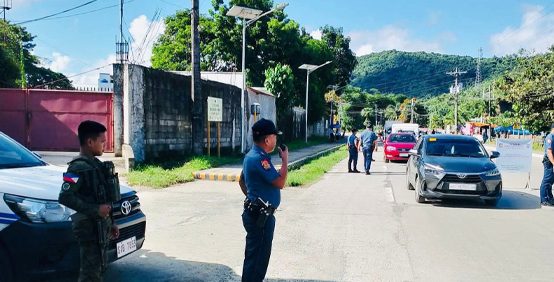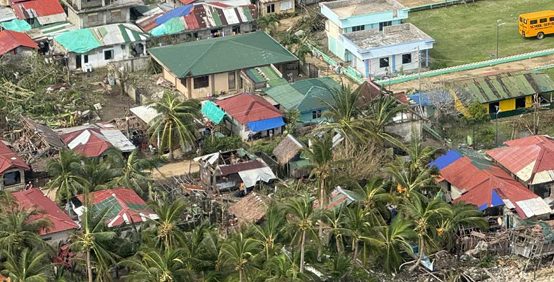Tacloban City found itself at the center of another major disaster as Typhoon “Tino” (international name: Kalmaegi) tore across the Visayas on November 4. The typhoon unleashed deadly floods and landslides, resulting in the deaths of at least 114 people and leaving 127 others missing in the region.
Authorities placed Eastern Visayas under red alert as Tino battered the area overnight, leading to mass evacuations and widespread work and class suspensions.
Mayor Alfred Romualdez ordered the closure of all government and private offices, while disaster officials urged residents in coastal and low-lying barangays to move to higher ground.
Despite preparations, at least two people were confirmed dead and three were injured in Leyte province. The Regional Police Office 8 deployed 3,400 personnel for rescue and relief operations, as emergency centers remained on full standby due to power outages and communication blackouts.
Signal No. 3 remained hoisted over the city, with winds reaching 150 kilometers per hour. Cebu province also suffered extensive destruction after Typhoon Tino struck, leaving neighborhoods submerged in waist-to-roof-deep floods.
The National Disaster Risk Reduction and Management Council (NDRRMC) reported confirmed fatalities reaching 114 and at least 127 missing. More than 400,000 people have been displaced or evacuated to temporary shelters due to landslides and flooding. President Ferdinand Marcos Jr. has ordered intensified search, rescue and relief efforts, emphasizing the urgent need for food, clean water, medicine and fuel in the hardest-hit areas.
The Department of Social Welfare and Development has begun distributing emergency supplies, while humanitarian organizations and preparing for long-term recovery and psychosocial support programs.
Typhoon Tino made its first landfall in Silago, Southern Leyte at M=midnight on November 4, before sweeping across Leyte, Cebu, Negros Occidental, Dinagat Islands and parts of Mindoro.
The storm’s path of destruction comes just weeks after the region suffered a major earthquake, deepening the humanitarian crisis and exposing gaps in disaster resilience and infrastructure readiness.
As dawn broke over the Visayas, Tacloban’s coastal communities and Cebu’s flooded streets told the same story of devastation.
With much of the Visayas still underwater and thousands of people displaced, officials warn that recovery will take months, if not years. Relief convoys continue to struggle through blocked highways while local governments plead for national and international support.
Photo: pagasa.dost.gov.ph



 Tacloban Gears Up for Christmas Rush with New Traffic Routes
Tacloban Gears Up for Christmas Rush with New Traffic Routes  Hope Amid Ruins: Communities of Homonhon Rise After Typhoon Tino’s Wrath
Hope Amid Ruins: Communities of Homonhon Rise After Typhoon Tino’s Wrath  Romualdez, Tingog Partylist Continue Relief Efforts for Areas Hit by Successive Typhoons ‘Tino,’ ‘Uwan’
Romualdez, Tingog Partylist Continue Relief Efforts for Areas Hit by Successive Typhoons ‘Tino,’ ‘Uwan’  Two Storms in Samar: Soldiers Face Rebels and Typhoon Tino in a Night of Courage and Chaos
Two Storms in Samar: Soldiers Face Rebels and Typhoon Tino in a Night of Courage and Chaos  Tacloban Jail Levels Up Inmate Care
Tacloban Jail Levels Up Inmate Care  Tacloban Police Arrest First-Time Offender, Seize P34K Worth of Suspected Shabu
Tacloban Police Arrest First-Time Offender, Seize P34K Worth of Suspected Shabu